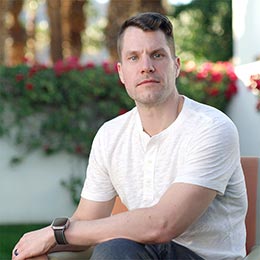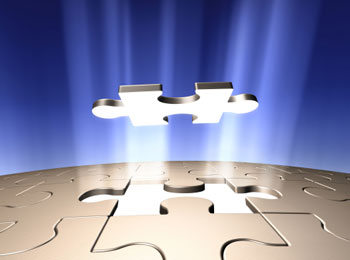
Narcissistic websites aren't the future. Branded content is.
A brand is a nebulous thing. It's the sum of the perceptions, feelings and beliefs toward a given company.
A recent trend in interactive marketing is to try and create websites that "capture" the online essence of the brand (Modernista, Skittles, and CP+B). Some have called these brand mirrors, others have called them brand nets. The gist of these websites is to give you insight into what people are saying about that company/product across the web. Whether good or bad, they highlight mentions on twitter/wikipedia etc.
Is this trend a gimmick, or the future? It's a little bit of both. The reality is most of these executions are more gimmick than not. At least CP+B's brand promise is creating advertising people talk about, so by showing just how much people are talking about their work, they accomplish what they set out to do. Skittles... not so much. Too often brand nets are more narcissistic than useful. They monitor the conversation without participating in it.
The real future is in building branded websites that transcend the traditional limits of the online space. They merge offline content and activities in powerful new online ways. Red Bull's new site is a good example of this. They use all of their sponsored events, athletes and spectacles to generate content that's exclusive to the web. This content shows by example what it means to give people wings. They take something that most people think of solely as "offline", event marketing, and use it to generate tons of solid content for their website.
Brand "nets" may not be the future, but branded content is here to stay.
The Last Piece of the Puzzle

What if we looked at new ideas as a combination of all the previous good ideas they contained, instead of as completely new inventions. The Macintosh wasn't the first computer, the first GUI, or the first mouse. The Model T wasn't the first combustion engine, the first car or the first Ford. The same goes for the iPod and the the incandescent lightbulb.
The new ideas that become truly influential are a combination of previously proven ideas that in their totality turn into something special. The genius of innovation is almost never a revolutionary new idea. Most often innovation is combining a series of previously unrelated items into something that by nature of their combination becomes new and remarkable.
The Hidden Cost of Charging for Luggage
About a year ago Delta Airlines made a decision to start charging for luggage. The plan was simple. $15/bag for suitcases under 50 lbs and a $90 surcharge for bags over 50 lbs. Delta ran the numbers and figured out it would be an easy way to drive additional revenue. Their research probably showed that the only thing people really care about is the price of the ticket, and it was probably further rationalized by the fact most trips are short enough that a carry-on bag can suffice. Charging for bags would make flights more profitable, but it would also have consequences.
The biggest consequence of this decision was expected. Delta knew customers would be upset when they had to pay $15 for baggage, so I'm not going to focus on that. What's more interesting are the consequences they didn't plan for.
A $90 surcharge on bags over 50 lbs is an extremely large fee. It's potentially a 1/3 or more of the total ticket price. Naturally people will want to avoid this fee. However, the 50 lbs mark is right at the upper limit of what a large bag would weigh, so a large number of customers will carry bags that are 51-55 lbs (especially for couples who share a single bag), and the majority of customers who encounter this fee will be barely over the "limit." These customers will try to do anything to avoid a fee of this magnitude. In fact, many customers start to unpack their luggage while it's sitting on the scale in order to try and get below the arbitrary 50 lbs limit.
The question now becomes, how much longer does delta spend interacting with each of these angry customers unpacking their bags at the check-in counter to avoid the $90 fee? A normal bag drop-off takes a minute, maybe two minutes. Each customer who unpacks their bag at drop-off to avoid the fee will generally take 7-10 minutes. One customer now takes the same amount of time to deal with as 3 used to. This an efficiency cost, and it won't be offset since the overweight baggage fee goes uncollected.
The other unintended consequence of this decision is that it encourages people to use larger carry-on bags. This means more bags must now fit in the carry-on compartments. Boarding is no longer about getting people to their seats, it's about finding space for all the carry-ons. Instead of preparing for take-off, flight attendants spend 10-15 minutes moving and re-packing carry-on compartments.
It's not that Delta doesn't understand behavioral economics, they do. And, it's not that they didn't carefully study this decisions, they did. They just failed to account for the unintended consequences. They were so focused on the potential increase in top line revenue that they ignored the hidden costs associated with it.
TD Gammon—the most amazing computer you've never heard of.
The only way to improve is to focus on what you're doing wrong. This simple concept turned an unassuming computer program into the most dominant backgammon player in history. The computer was called TD Gammon, and it changed the way we think about the world.
Gerald Tesauro created TD Gammon in 1992 to test his theories on artificial intelligence. The goal was to make TD Gammon the best backgammon player in the world. In the beginning, TD Gammon picked each move randomly. It wasn't programmed with good moves, or bad moves.
Unlike Deep Blue, the famous chess playing computer who predicted millions of moves in advance, it didn't rely on the brute force of predictive logic, it simply measured its rate of failure. In fact, TD Gammon could only search 3 moves in advance during it's 15 second turn. TD Gammon could only improve by practicing its craft. Each move it made was recorded and the outcome logged. If it lost a game, it focused on identifying the moves that caused it to lose. TD Gammon analyzed only its short comings, the errors that it made, and how to resolve them.
Over time, TD Gammon improved to an astounding degree. Within a few years it was the world's best backgammon player. Kit Woolsley, a previous backgammon champion, said "There is no question in my mind that its positional judgment is far better than mine."
TD Gammon could care less about success. It had no ego. It didn't care if it made a brilliant move, or how many games it actually won. It only cared about the errors it made. It was programmed to do nothing, but continually improve. And that single-minded focus allowed it to dominate its field.
There's a difference between hiring people and recruiting talent.
As an interactive agency, our biggest expense is our people. Hiring a new employee is a big investment, and potentially a risky one as well. This is made more difficult because the interactive industry is growing, and is highly competitive. There are lot of good companies vying for a limited number of exceptional people. Over time our approach to hiring has evolved based on a rather unlikely template. We've decided to approach hiring new employees more like college basketball programs approach recruiting talented players.
Why? College basketball is highly competitive. In fact, it's more competitive than most industries out there. Plus, everyone has to play by the same rules. This means that the biggest differentiator a team can have versus it's competition is the talent-level of their players.
So how do the great teams go about getting more talented players than their competition? College basketball teams don't post ads on websites and wait for the applications to flood in. They scout, identify and recruit talent that fits their needs. Great companies used to do the same thing with corporate recruiters. But, with the advent of tools like linkedin, it's easier than ever to proactively scout for talent. Companies can identify potential employees with nothing more than a few minutes searching.
But, changing from a hiring mindset to a recruiting mindset also shifts the way you approach the interview process. Each touchpoint with a potential hire is an interaction with your brand. It's the business equivalent of a high school athlete making a campus visit. If the applicant has to answer a series of generic pre-interview questions by email, is blown off by a distracted team member when they come for the in person interview, and has to sit uncomfortably in the lobby for an extended period of time; then the chances are the applicant is going to judge your company based on those interactions. And if those interactions are negative then you're at a disadvantage from the start. Talented people aren't really "hired" by companies, they "choose" to work there. If you give them a reason to say no, chances are they'll take it.